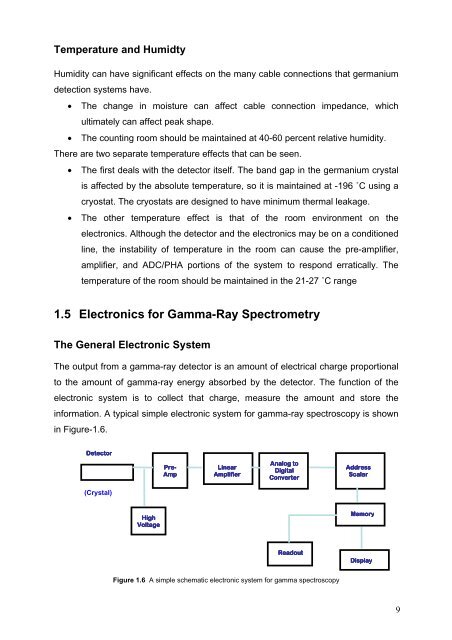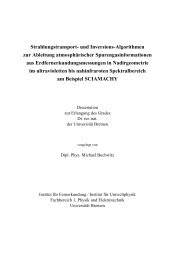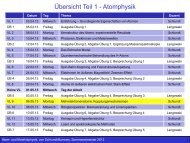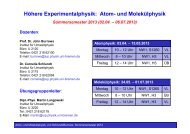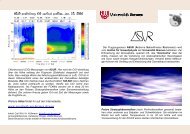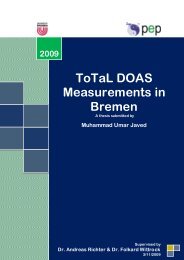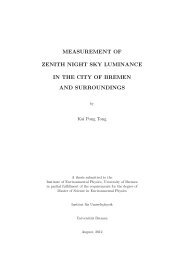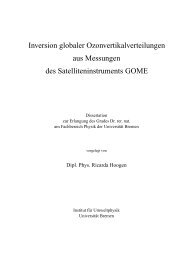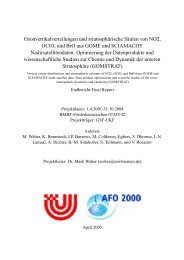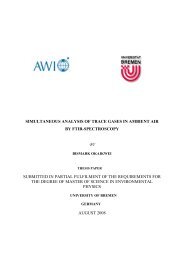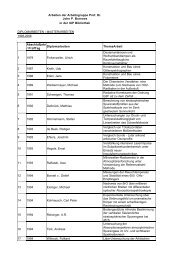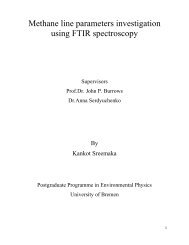True Coincidence Summing Correction in Gamma Spectroscopy
True Coincidence Summing Correction in Gamma Spectroscopy
True Coincidence Summing Correction in Gamma Spectroscopy
You also want an ePaper? Increase the reach of your titles
YUMPU automatically turns print PDFs into web optimized ePapers that Google loves.
Temperature and Humidty<br />
Humidity can have significant effects on the many cable connections that germanium<br />
detection systems have.<br />
• The change <strong>in</strong> moisture can affect cable connection impedance, which<br />
ultimately can affect peak shape.<br />
• The count<strong>in</strong>g room should be ma<strong>in</strong>ta<strong>in</strong>ed at 40-60 percent relative humidity.<br />
There are two separate temperature effects that can be seen.<br />
• The first deals with the detector itself. The band gap <strong>in</strong> the germanium crystal<br />
is affected by the absolute temperature, so it is ma<strong>in</strong>ta<strong>in</strong>ed at -196 ˚C us<strong>in</strong>g a<br />
cryostat. The cryostats are designed to have m<strong>in</strong>imum thermal leakage.<br />
• The other temperature effect is that of the room environment on the<br />
electronics. Although the detector and the electronics may be on a conditioned<br />
l<strong>in</strong>e, the <strong>in</strong>stability of temperature <strong>in</strong> the room can cause the pre-amplifier,<br />
amplifier, and ADC/PHA portions of the system to respond erratically. The<br />
temperature of the room should be ma<strong>in</strong>ta<strong>in</strong>ed <strong>in</strong> the 21-27 ˚C range<br />
1.5 Electronics for <strong>Gamma</strong>-Ray Spectrometry<br />
The General Electronic System<br />
The output from a gamma-ray detector is an amount of electrical charge proportional<br />
to the amount of gamma-ray energy absorbed by the detector. The function of the<br />
electronic system is to collect that charge, measure the amount and store the<br />
<strong>in</strong>formation. A typical simple electronic system for gamma-ray spectroscopy is shown<br />
<strong>in</strong> Figure-1.6.<br />
Detector<br />
Pre-<br />
Amp<br />
L<strong>in</strong>ear<br />
Amplifier<br />
Analog to<br />
Digital<br />
Converter<br />
Address<br />
Scalar<br />
(Crystal)<br />
High<br />
Voltage<br />
Memory<br />
Readout<br />
Display<br />
Figure 1.6 A simple schematic electronic system for gamma spectroscopy<br />
9


